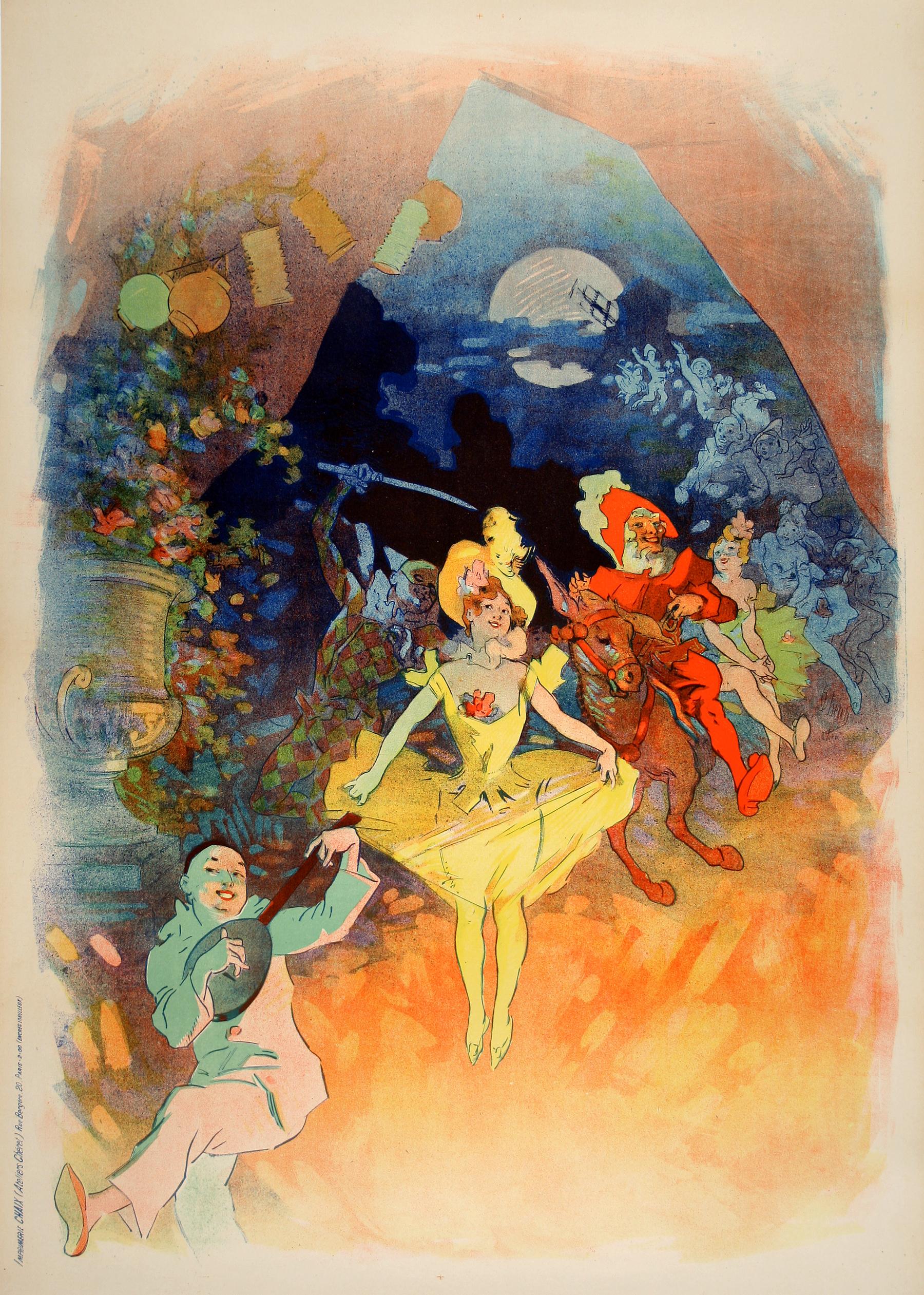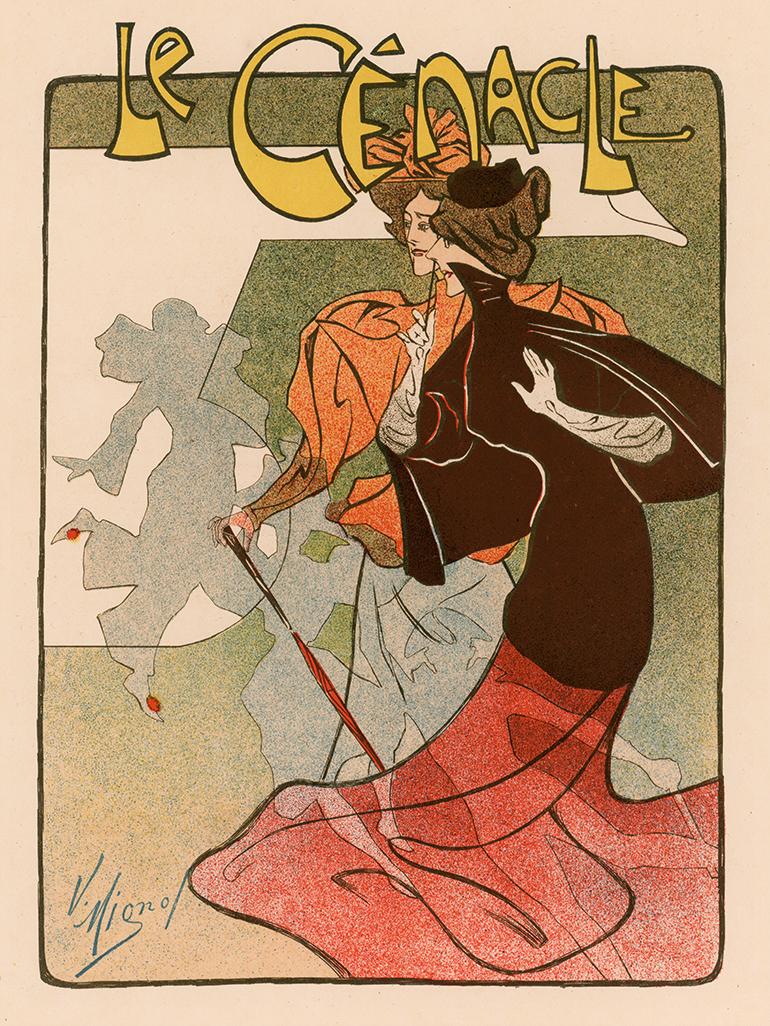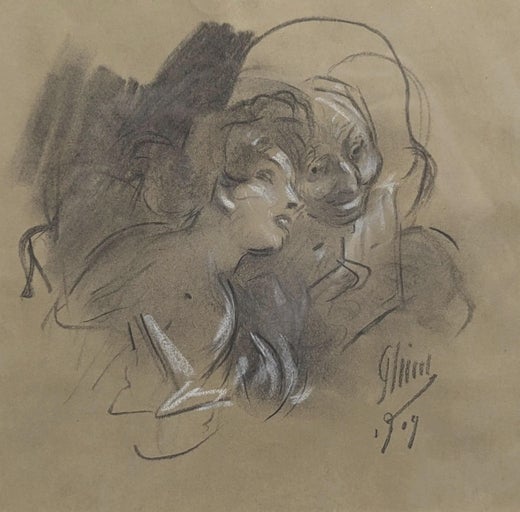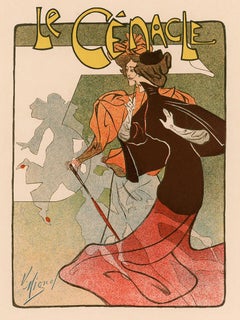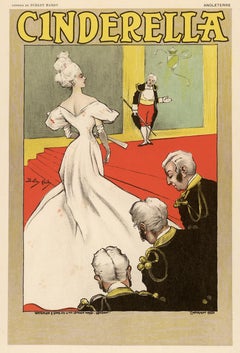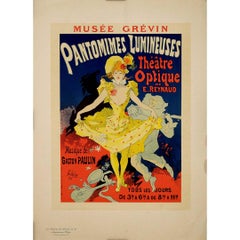Jules ChéretMusée Grévin, Pantomimes Lumineuses by Jules Cheret, Commedia lithograph, 18961896
1896
About the Item
- Creator:Jules Chéret (1836 - 1932, French)
- Creation Year:1896
- Dimensions:Height: 12.437 in (31.59 cm)Width: 8.562 in (21.75 cm)Depth: 0.2 in (5.08 mm)
- Medium:
- Movement & Style:
- Period:
- Condition:Free of foxing, burns, chipping, folds, or tears. Extremely minor surface abrasion in margins, only visible under certain lighting conditions. Image remains pristine, will frame beautifully.
- Gallery Location:Chicago, IL
- Reference Number:1stDibs: LU149327582092
Jules Chéret
Once upon a belle époque, Jules Chéret and his posters were the toast of Paris. It was the Art Nouveau era, a time when works like those created by Chéret were key to the fabric of the cosmopolitan thoroughfare in the French capital. Today, this extraordinary artist and printer is little known.
It was Chéret who transformed the street advert into the most expressive and coveted art form of the late 1800s. Think: a red-headed belle in a flimsy yellow dress, frolicking through a field of blue as she pours a glass of “tonic wine,” with the brand name Vin Mariani wafting about her.
Through his bold advances in chromolithography and the graphic arts, Chéret and the younger talents he inspired — like Pierre Bonnard, Alphonse Mucha and Henri de Toulouse-Lautrec — along with other artists, turned the stone-gray streets of Paris into a kaleidoscopic, ever-changing urban spectacle.
Raised in a family of poor Parisian artisans, Jules Chéret was apprenticed to a lithographer at 13. Although he took a class at the École nationale de dessin, as an artist, he was largely self-taught, schooling himself in art history and technique by visiting remarkable works at museums. When his first solo poster designs failed to garner further commissions, Chéret, then 23, relocated to London, where colorful but text-heavy posters enlivened the streets.
The move proved pivotal, as he soon found work with the French expat Eugène Rimmel, a visionary businessman and one of the founders of the beauty and healthcare industries. A brilliant marketer, he regularly produced colorful, elegantly illustrated and culturally sophisticated catalogues to publicize House of Rimmel cosmetics and fragrances. These and other promotional ventures kept Chéret busy, while sharpening his understanding of the commercial potential of print.
So, when he learned of the invention of a press that could print large-scale formats inexpensively, Chéret recognized an opportunity to become his own boss. Now 30 years old, he returned to Paris with the financial support of Rimmel to establish his own print shop specializing in jumbo-size street posters and set about forging a fresh, eye-catching approach to their design.
Chéret accelerated the process of chromolithography by adding a stone with a graduated background that scaled in hue from orange to blue. With this, in addition to red- and black-pigmented stones, he could make vibrant posters more quickly and cheaply. In the late 1870s, his acquisition of steam-powered presses further sped up production and dramatically increased the volume of his output.
But perhaps Chéret’s greatest contribution to our world today was a simple insight into an eternal truth: Sex sells. The best way to market a product is to put a pretty, revealingly dressed young woman in the ad. In the 1890s, Chéret put so many to work in this cause that they came to be known as “Chérettes,” a conflation of chérie (“darling”) and Chéret.
Descended from the enchanting mademoiselles in the bucolic painterly confections of Rococo artists like Antoine Watteau and Jean-Honoré Fragonard, all smiles and femininity, they fused the present with the past, making them potent symbols of a newly affluent and peaceful France.
Find original Jules Chéret posters and prints and other Art Nouveau posters on 1stDibs.
- ShippingRetrieving quote...Shipping from: Chicago, IL
- Return Policy
More From This Seller
View All1890s Art Nouveau Prints and Multiples
Lithograph
1890s Art Nouveau Prints and Multiples
Lithograph
1890s Art Nouveau Prints and Multiples
Lithograph
1890s Art Nouveau Prints and Multiples
Lithograph
1890s Art Nouveau Prints and Multiples
Lithograph
1890s Art Nouveau Prints and Multiples
Lithograph
You May Also Like
1890s Prints and Multiples
Paper, Lithograph
1890s Art Nouveau Figurative Prints
Lithograph
1890s Art Nouveau Figurative Prints
Lithograph
Early 1900s Prints and Multiples
Lithograph
Early 1900s Prints and Multiples
Lithograph
Early 1900s Prints and Multiples
Linen, Lithograph, Paper

